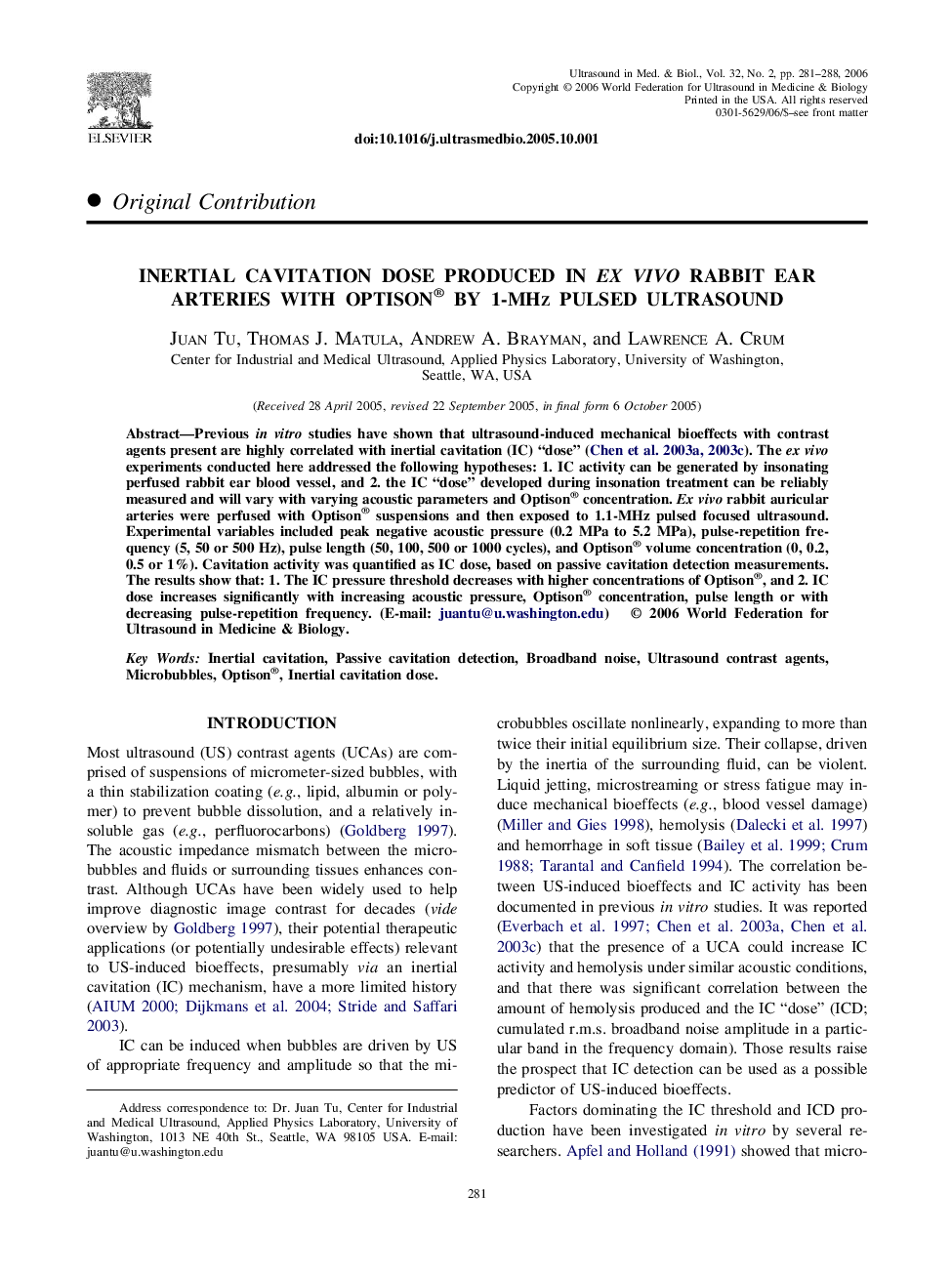| Article ID | Journal | Published Year | Pages | File Type |
|---|---|---|---|---|
| 1762907 | Ultrasound in Medicine & Biology | 2006 | 8 Pages |
Abstract
Previous in vitro studies have shown that ultrasound-induced mechanical bioeffects with contrast agents present are highly correlated with inertial cavitation (IC) “dose” (Chen et al 2003a, Chen et al 2003c). The ex vivo experiments conducted here addressed the following hypotheses: 1. IC activity can be generated by insonating perfused rabbit ear blood vessel, and 2. the IC “dose” developed during insonation treatment can be reliably measured and will vary with varying acoustic parameters and Optison® concentration. Ex vivo rabbit auricular arteries were perfused with Optison® suspensions and then exposed to 1.1-MHz pulsed focused ultrasound. Experimental variables included peak negative acoustic pressure (0.2 MPa to 5.2 MPa), pulse-repetition frequency (5, 50 or 500 Hz), pulse length (50, 100, 500 or 1000 cycles), and Optison® volume concentration (0, 0.2, 0.5 or 1%). Cavitation activity was quantified as IC dose, based on passive cavitation detection measurements. The results show that: 1. The IC pressure threshold decreases with higher concentrations of Optison®, and 2. IC dose increases significantly with increasing acoustic pressure, Optison® concentration, pulse length or with decreasing pulse-repetition frequency. (E-mail: juantu@u.washington.edu)
Keywords
Related Topics
Physical Sciences and Engineering
Physics and Astronomy
Acoustics and Ultrasonics
Authors
Juan Tu, Thomas J. Matula, Andrew A. Brayman, Lawrence A. Crum,
